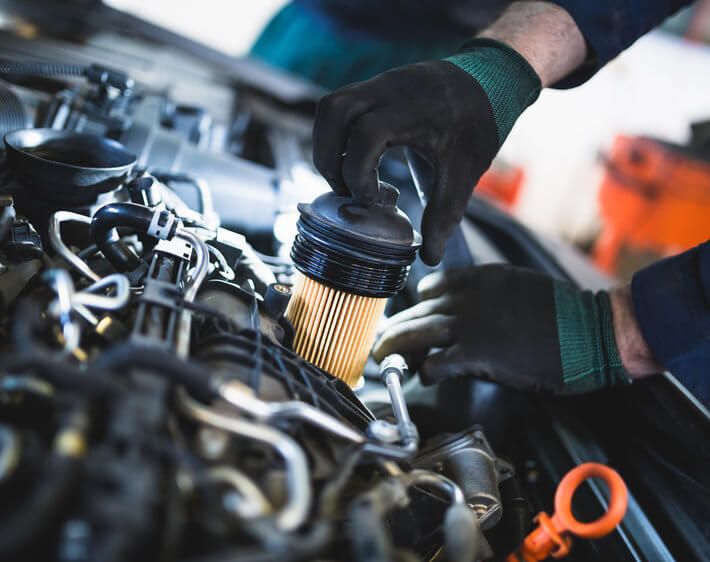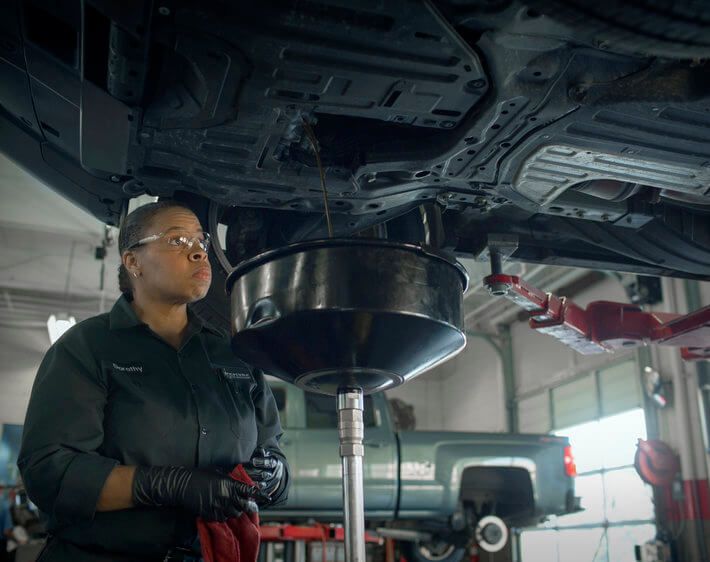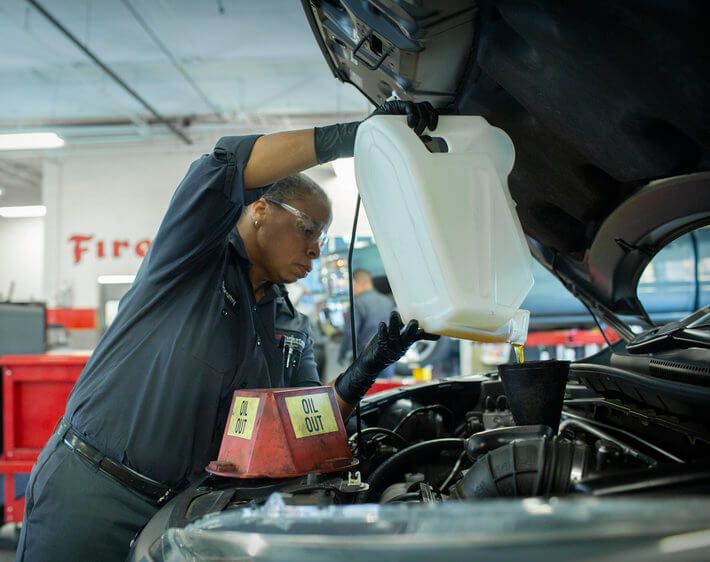A car's oil filter does two important things: filter waste and keep oil in the right place, at the right time.
Your engine can’t perform its best without clean motor oil, and your motor oil can’t perform its best unless the oil filter is doing its job. But do you know how an oil filter — the unsung hero of your car’s engine — actually works?
Driving with a dirty oil filter can damage or ruin your car's engine. Knowing what your oil filter is and how it works could help you recognize when it’s time for an oil filter replacement. Hear from our teammates below and read on to learn more.
https://youtu.be/cYBB-PEGtKM
It filters waste.
If motor oil is the lifeblood of your engine, then the oil filter is like the kidneys! In your body, kidneys filter waste and remove extra fluid to keep things healthy and humming along.
Your car's oil filter removes waste, too. It captures harmful debris, dirt, and metal fragments in your motor oil to keep your car's engine running smoothly.
Without the oil filter, harmful particles can get into your motor oil and damage the engine. Filtering out the junk means your motor oil stays cleaner, longer. Cleaner oil means better engine performance.
It keeps oil where it should be.
Your oil filter doesn’t just filter waste. Its many parts work together to clean the oil and keep it in the right place at the right time.
- Tapping Plate: Oil enters and exits the oil filter through the tapping plate, which looks like a center hole surrounded by smaller ones. Motor oil goes through the smaller holes, through the filter material, and then flows to your engine through the center hole.
- Filter Material: The filter is made of a mesh of synthetic fibers that act as a sieve to catch grit and grime in the motor oil. The material is folded into pleats to create a greater surface area.
- Anti-Drain Back Valve: When your vehicle is not running, this valve flaps shut to prevent oil from seeping back into your oil filter from the engine.
- Relief Valve: When it’s cold outside, motor oil can thicken and struggle to move through the filter. The relief valve discharges a small amount of unfiltered motor oil to give your engine a boost until it warms up.
- End Discs: Two end discs on either side of the oil filter, made of metal or fiber, prevent unfiltered oil from passing through to your engine.
You don’t need to remember all of these parts, of course, but knowing how they all work together can help you realize how important it is to replace your oil filter.
It needs to be replaced regularly.
By the time you drive 3,000 miles—the generally recommended interval for oil changes—your oil has gone through the oil filter 12,000 times!
Like other car parts, the filter gets dirty and functions less effectively with regular wear and tear. Many manufacturers recommend having your oil filter replaced every time you get an oil change, but check your owner’s manual for specific recommendations.
A survey by the Car Care Council found that one out of four cars had low levels of engine oil or had dirty engine oil. If your car is one of them, it may not be operating at peak performance, partly because your oil filter needs replacement.
Symptoms that your oil and oil filter need to be replaced could include:
- Acceleration problems
- Metallic noises under the hood
- Low oil pressure
- Changes in exhaust color
Firestone Complete Auto Care can help.
Fortunately, every oil change service at Firestone Complete Auto Care includes an oil filter replacement.
One of our expertly trained technicians will change your car’s oil, replace and recycle your car’s used oil filter, perform a comprehensive 19-point courtesy inspection, and top off your car’s other essential fluids.
Schedule an oil change at your local Firestone Complete Auto Care today and drive with confidence knowing that the job’s been done right the first time. Our Triple Promise backs every job we do, meaning it’s Fixed Right, Priced Right, Right on Time.



